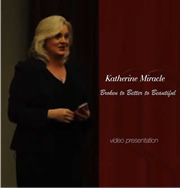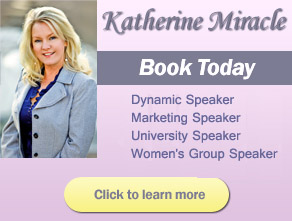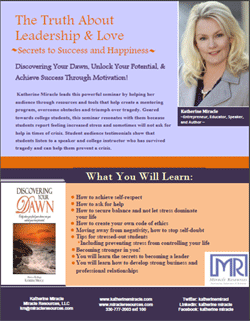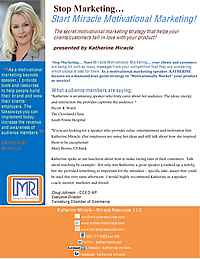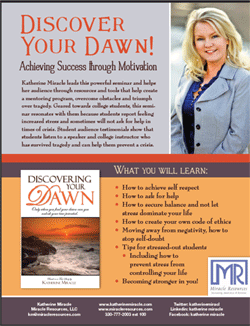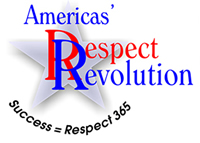If you are asked to introduce yourself in front of others or in a one-on-one conversation, remember the three P’s.
For example, let’s pretend you are at an event and someone asks, “So, tell us about yourself?”
- Purpose — What you do, your title or what jobs you are seeking
- Passion — What you love about that work
- Proof — A quick story that proves you are good at what you do (builds credibility)
Example: “I am a graphic designer (purpose). I specialize in advertising and website design (passion). I just completed the website for XYZ company (proof). I am Jill Meeks.”
We save our name for last so people can remember it. People are listening to see what you do and if they need you. So intrigue them by giving detail. Then say your name so they can connect to you.
Once you begin working with people or building relationships, use this test on how you like to communicate:
- How do you like to communicate? Text, email, phone, letter or face to face?
- What does the person with whom you are trying to communicate do all day? Are they in meetings, with customers, driving, or do they have lunch breaks?
- Do you call people when you have down time? How does the person you are trying to reach like to communicate?
- Do you call people and ask them if they have time to talk? If yes, do they say “yes” but seem distracted when you talk?
- Do you schedule phone calls using email or text?
- Do you have a set time you talk to family, friends, co-workers, and clients each week?
- Have you answered the above questions and realized you communicate when it is convenient for you?
Communication breakdown happens when the way we communicate is a disconnect for one person.
Please know this is a deal breaker in business and relationships. Your brand may work very well in one form of communication, but it can adversely impact your long-term goals. Example: I love to text and email. As a business owner I had to become stronger in my phone skills by listening and hanging up last.
The way you communicate is powerful when you help people visualize the message you are sending.
Example: I can tell someone to proof something, and when it is not correct, I wonder why. Dan Boos, art director/consultant for Miracle Resources, says it this way, “Grab a cup of coffee, relax, do a read through (saying it out loud), and you can catch so much!” Since Dan taught me that, I actually enjoy proofing! Dan painted a picture of the action.
Successful communication brings emotional and positive action to your request and builds your brand.
Katherine Miracle is the president of Miracle Resources, a full-service marketing, public relations, and training firm that helps clients increase revenue and awareness. She is a strategic personal branding expert and the author of “Your Strategic Personal Brand.” She can be reached at [email protected] or Twitter.
Source: http://cbcmagazine.com/2016/09/28/katherine-miracle-communication-that-protects-and-builds-your-brand/









